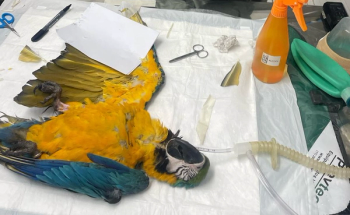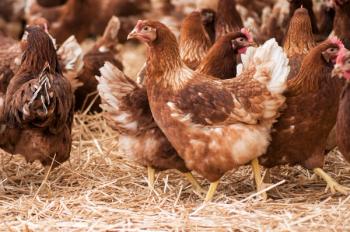
Canine influenza and the current outbreak: 10 takeaways
An update on this infectious disease from Dr. Richard Goldstein, Chief Medical Officer of the Animal Medical Center in New York.
Outbreaks of CIRD result from direct dog-to-dog contact and transmission in stressful environments with high dog population densities.
Richard Goldstein, DVM, DACVIM, DECVIM-CA, Chief Medical Officer of the Animal Medical Center in New York, shared these takeaways about canine influenza and canine infectious respiratory disease (CIRD) during a webinar on May 15, sponsored by Zoetis:
• One or more pathogens-including canine parainfluenza virus, canine influenza virus (H3N8-an equine-origin virus, or H3N2-an avian-origin virus), Mycoplasma cynos, canine adenovirus type 2, Bordetella bronchiseptica, and canine respiratory coronavirus-may cause CIRD.
• Viruses may be shed before the onset of clinical signs, and outbreaks typically result from direct dog-to-dog contact and by fomite and aerosol transmission in stressful environments with high population densities such as boarding, daycare, grooming, or veterinary medical facilities; animal shelters; pet stores; or canine sports or other competitions.
• Typical CIRD clinical signs include paroxysmal coughing, laryngitis, hacking cough or gagging, and rhinitis for one or two weeks. However, puppies and unvaccinated dogs may exhibit a severe presentation that includes the aforementioned signs along with anorexia, lethargy, fever, and dyspnea, and the duration of illness may be prolonged.
• Inform all veterinary staff about canine influenza. Instruct them to ask clients about dogs' travel histories, quarantine dogs that come from endemic areas, and educate clients about avoiding travel to endemic areas with their dogs.
• Influenza virus diagnosis can be made by PCR evaluation in the early stages of illness, before viral shedding stops. PCR tests to detect canine influenza H3N2 and H3N8 infection are available as a component of a canine respiratory disease panel from IDEXX and Cornell University's Animal Health Diagnostic Center.
• Isolate suspect animals, test them and report the results. Veterinarians can avoid exposing a naïve population of dogs to H3N2 and prevent it from becoming a national problem.
• Treatment options include doxycycline, with its efficacy against Bordetella bronchiseptica, but keep in mind that it is a bacteriostatic antibiotic, and bactericidal antibiotics are required in animals with bacterial pneumonia. Anti-inflammatory doses of glucocorticoids can be given orally for five days or less to help relieve coughing, but they do not shorten the course of illness. Consider switching from a neck collar to a Gentle Leader headcollar (PetSafe), avoid irritants such as smoke and smog, and try to prevent barking. Antitussives such as hydrocodone or butorphanol may help but can also lead to reduced respiratory secretion clearance and are not recommended if a bacterial infection may be present. Aerosol therapy or nebulization of antibacterials may be useful in patients with secondary bacterial infections. Hydration, caloric support and isolation are recommended. Use supplemental oxygen therapy if indicated. Clients can also consider exposing the dog to brief periods in warm, humid environments (e.g. placing the dog in the room when the owner showers, but not placing the dog in the shower).
• Vaccines against CIRD include core vaccines (canine distemper virus and canine adenovirus type 2) and non-core vaccines (canine parainfluenza virus, canine influenza virus and Bordetella bronchiseptica). It's important to plan ahead and fully vaccinate potentially at-risk dogs. Educate clients that the non-core CIRD vaccines do not confer sterilizing immunity. A vaccine against canine influenza H3N2 is not available at this time.
• Dogs vaccinated against canine influenza H3N8, Bordetella bronchiseptica and canine parainfluenza are likely to show milder clinical signs associated with CIRD.
• Widespread vaccination with a canine influenza H3N8 vaccine is the best way to mitigate transmission of H3N8, and at-risk dogs should be identified and fully vaccinated against all components of CIRD for which a vaccine is available. It isn't known whether vaccinated dogs that test positive for H3N2 will exhibit a milder form of the disease.
Newsletter
From exam room tips to practice management insights, get trusted veterinary news delivered straight to your inbox—subscribe to dvm360.






